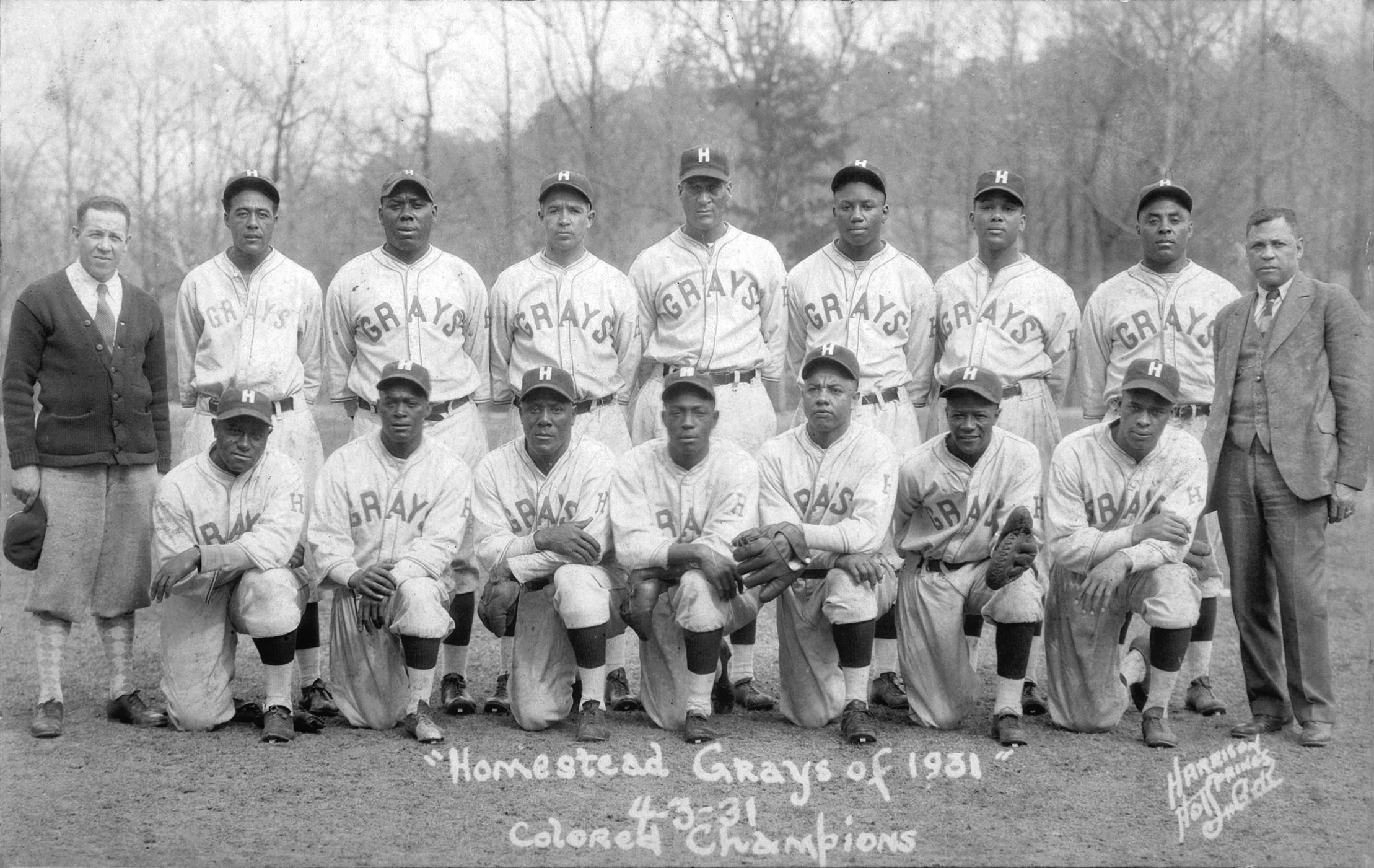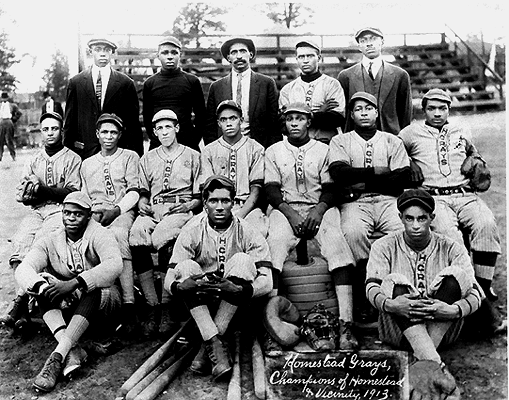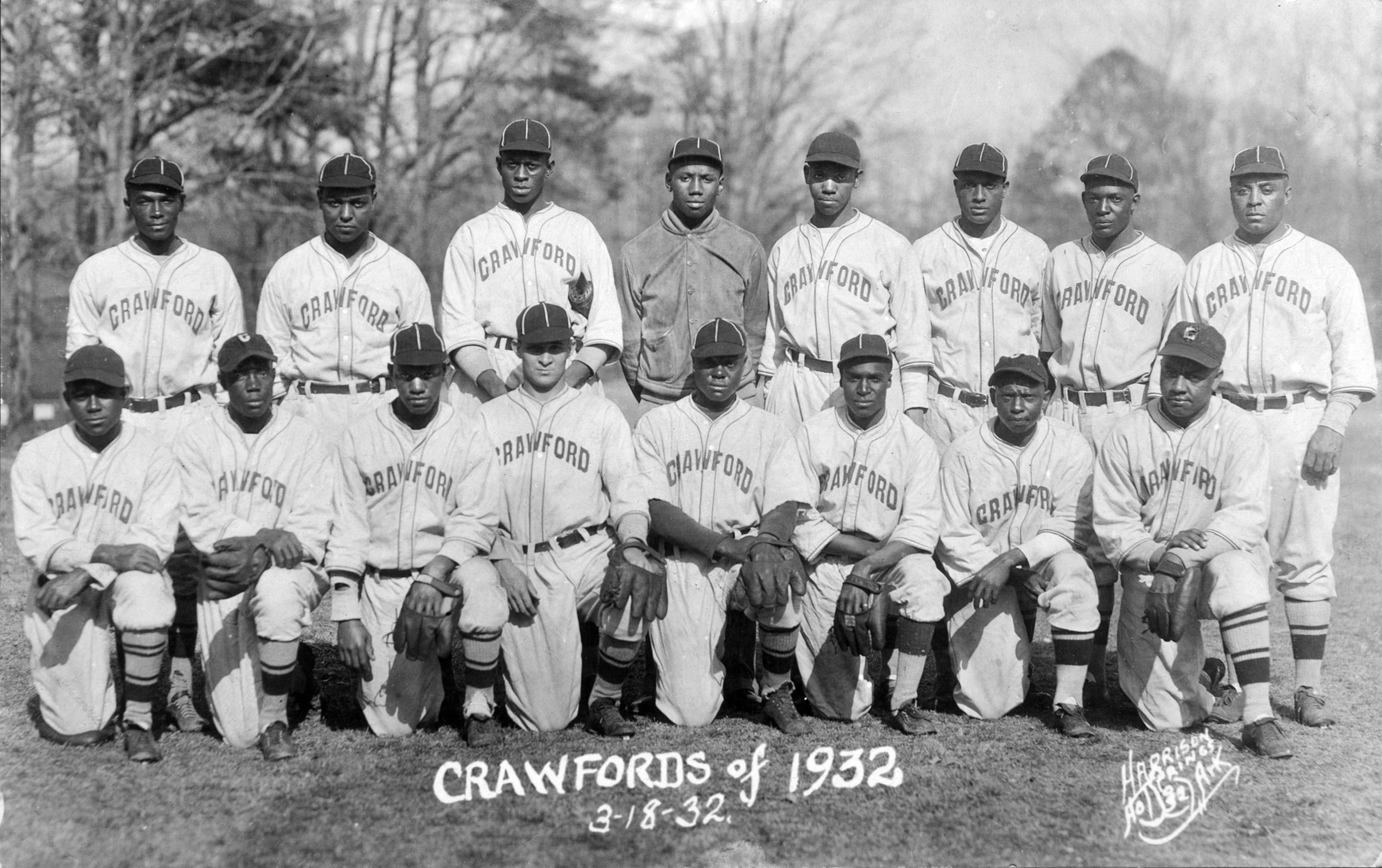|
See Posey
Seward Hayes "See" Posey (3 October 1887 - 25 August 1951) was a Negro league baseball executive. The older brother of Cum Posey, he worked as a business manager, traveling secretary, and booking agent for the Homestead Grays. After Rufus Jackson’s death, he took over control of the club. Posey was associated with the Grays and served actively through much of the period 1920–1951. Additionally, for a time, Posey was also a booking agent for Gus Greenlee’s Pittsburgh Crawfords The Pittsburgh Crawfords, popularly known as the Craws, were a professional Negro league baseball team based in Pittsburgh, Pennsylvania. The team, previously known as the Crawford Colored Giants, was named after the Crawford Bath House, a recrea .... He was the son of Homestead, PA steamship builder, Captain Cumberland Willis "CW" and Angelina "Anna" (Stevens) Posey, and was the middle sibling to Beatrice (Posey) Baker and Cumberland Willis "Cum" Posey, Jr. He first married Beatrice Susan Hill, a ... [...More Info...] [...Related Items...] OR: [Wikipedia] [Google] [Baidu] |
Negro League Baseball
The Negro leagues were United States professional baseball leagues comprising teams of African Americans and, to a lesser extent, Latin Americans. The term may be used broadly to include professional black teams outside the leagues and it may be used narrowly for the seven relatively successful leagues beginning in 1920 that are sometimes termed "Negro Major Leagues". In the late 19th century, the baseball color line developed in professional baseball, excluding African Americans from league play. In 1885, the Cuban Giants formed the first black professional baseball team. The first league, the National Colored Base Ball League, was organized strictly as a minor league but failed in 1887 after only two weeks owing to low attendance. After several decades of mostly independent play by a variety of teams, in 1920 the first Negro National League was formed and ultimately seven major leagues existed at various times over the next thirty years. After integration, the quality of th ... [...More Info...] [...Related Items...] OR: [Wikipedia] [Google] [Baidu] |
Cum Posey
Cumberland Willis "Cum" Posey Jr. (June 20, 1890 – March 28, 1946) was an American baseball player, manager, and team owner in the Negro leagues, as well as a professional basketball player and team owner. Early life Cumberland Jr. was born into Western Pennsylvania's Negro elite, the son of Cumberland Willis Posey Sr. and Angelina "Anna" Stevens Posey of Homestead, adjacent to Pittsburgh. Posey Sr. worked on riverboats and, in 1877, became probably the first African American licensed engineer in the United States, earning a chief engineer license and the title of, "Captain." "Cap" Posey was a riverboat builder, general manager of the Dexter Coal Company, owner of the Diamond Coke and Coal Company, and industrial partner of Henry Clay Frick. He was president of the Loendi Social and Literary Club for three years and president of the ''Pittsburgh Courier'' newspaper for its first 14 years, to 1924.(Williams) The family lived in a palatial Italianate mansion on the heights. Des ... [...More Info...] [...Related Items...] OR: [Wikipedia] [Google] [Baidu] |
Homestead Grays
The Homestead Grays (also known as Washington Grays or Washington Homestead Grays) were a professional baseball team that played in the Negro league baseball, Negro leagues in the United States. The team was formed in 1912 in sports, 1912 by Cumberland Posey, and remained in continuous operation for 38 seasons. The team was originally based in Homestead, Pennsylvania, adjacent to Pittsburgh. By the 1920s, with increasing popularity in the Pittsburgh region, the team retained the name "Homestead" but crossed the Monongahela River to play all home games in Pittsburgh, at the Pittsburgh Pirates' home Forbes Field and the Pittsburgh Crawfords' home Greenlee Field. From 1940 until 1942, the Grays played half of their home games in Washington, D.C., while remaining in Pittsburgh for all other home stands. As attendance at their games in the nation's capital grew, by 1943, the Grays were playing more than two-thirds of their home games in Washington.Snyder, Brad (2003). ''Beyond the Sha ... [...More Info...] [...Related Items...] OR: [Wikipedia] [Google] [Baidu] |
Rufus Jackson
Rufus is a masculine given name, a surname, an Ancient Roman cognomen and a nickname (from Latin ''rufus'', "red"). Notable people with the name include: Given name Politicians * Rufus Ada George (born 1940), Nigerian politician * Rufus Aladesanmi III (born 1945), Yoruban king * Rufus Applegarth (1844–1921), American lawyer and politician * Rufus A. Ayers (1849–1926), American lawyer, businessman, and politician * Rufus Barringer (1821–1895), American lawyer, politician, and military general * Rufus Blodgett (1834–1910), American politician and railroad superintendent * Rufus Bousquet (born 1958), Saint Lucian politician * Rufus E. Brown (1854–1920), Vermont attorney, farmer, and politician * Rufus Bullock (1834–1907), American politician * Rufus Carter (1866–1932), Canadian farmer and political figure * Rufus Cheney Jr., member of the Wisconsin State Assembly during the 1850 session * Rufus W. Cobb (1829–1913), American politician * Rufus Curry (1859–1934 ... [...More Info...] [...Related Items...] OR: [Wikipedia] [Google] [Baidu] |
Gus Greenlee
William Augustus Greenlee (December 26, 1893 – July 7, 1952) was a highly successful businessman in Pittsburgh, Pennsylvania, who was born and raised in Marion, North Carolina. After migrating to Pittsburgh as a young man and working in the steel industry, he started to acquire his own businesses. There he also bought the Pittsburgh Crawfords baseball team in 1931, founded the second Negro National League in 1933, serving as president; and built Greenlee Field, one of the few ball parks built for and owned by a Negro league team. Life Gus Greenlee was born in Marion, North Carolina in 1893. His father was a masonry contractor and his mother was a homemaker. Greenlee did not complete college, but his three older brothers did and pursued professional careers: two became doctors and one a lawyer. In 1916, Greenlee traveled north by freight car to Pittsburgh, settling in the Hill District. This was the period of the first Great Migration, when more than one million blacks ... [...More Info...] [...Related Items...] OR: [Wikipedia] [Google] [Baidu] |
Pittsburgh Crawfords
The Pittsburgh Crawfords, popularly known as the Craws, were a professional Negro league baseball team based in Pittsburgh, Pennsylvania. The team, previously known as the Crawford Colored Giants, was named after the Crawford Bath House, a recreation center in the Crawford neighborhood of Pittsburgh's Hill District. In 1931 Gus Greenlee, an African-American businessman in Pittsburgh, bought the Crawfords. In 1933 he founded what is known as the second Negro National League, and built Greenlee Field as a ball park for his team. During the mid-1930s, the Crawfords were one of the strongest Negro league teams ever assembled. History As Richard L. Gilmore recounts in a 1996 article on the history of the team, the Crawfords began as an interracial team of local Hill District youth who played ball together in neighborhood sandlots. Resident families included black migrants from the South and European immigrants, all of whom were attracted to industrial jobs in the city. As the Hi ... [...More Info...] [...Related Items...] OR: [Wikipedia] [Google] [Baidu] |
Negro League Baseball Executives
In the English language, ''negro'' is a term historically used to denote persons considered to be of Black African heritage. The word ''negro'' means the color black in both Spanish and in Portuguese, where English took it from. The term can be construed as offensive, inoffensive, or completely neutral, largely depending on the region or country where it is used, as well as the context in which it is applied. It has various equivalents in other languages of Europe. In English Around 1442, the Portuguese first arrived in Southern Africa while trying to find a sea route to India. The term ', literally meaning "black", was used by the Spanish and Portuguese as a simple description to refer to the Bantu peoples that they encountered. ''Negro'' denotes "black" in Spanish and Portuguese, derived from the Latin word ''niger'', meaning ''black'', which itself is probably from a Proto-Indo-European root ''*nekw-'', "to be dark", akin to ''*nokw-'', "night". ''Negro'' was also used of ... [...More Info...] [...Related Items...] OR: [Wikipedia] [Google] [Baidu] |
Year Of Birth Missing
A year or annus is the orbital period of a planetary body, for example, the Earth, moving in its orbit around the Sun. Due to the Earth's axial tilt, the course of a year sees the passing of the seasons, marked by change in weather, the hours of daylight, and, consequently, vegetation and soil fertility. In temperate and subpolar regions around the planet, four seasons are generally recognized: spring, summer, autumn and winter. In tropical and subtropical regions, several geographical sectors do not present defined seasons; but in the seasonal tropics, the annual wet and dry seasons are recognized and tracked. A calendar year is an approximation of the number of days of the Earth's orbital period, as counted in a given calendar. The Gregorian calendar, or modern calendar, presents its calendar year to be either a common year of 365 days or a leap year of 366 days, as do the Julian calendars. For the Gregorian calendar, the average length of the calendar year (the mea ... [...More Info...] [...Related Items...] OR: [Wikipedia] [Google] [Baidu] |





